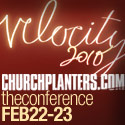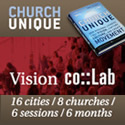Religion Trends on the Horizon for 2008
- Posted by: Todd
- Posted on: Wed, January 02, 2008
- Viewed 50
- (0) comments so far
World-class
First, 2008 is the year of the 29th Olympiad to be held in Beijing, China. In the spectator section of the official Beijing Games Web site (http://en.beijing2008.cn/spectators) is a listing of places of worship for those attending the Olympic Games Aug. 8-24, and the Paralympic Games there from Sept. 6-17. The list includes five Buddhist temples, one Protestant church, five Catholic churches and one Islamic mosque. This current environment of religion there stands in stark contrast to the restrictions of the Cultural Revolution which swept through that culture from 1966 to 1976. Today, the new attitude is one of respect for all religions. As world economies, governments and cultures transition, religion inevitably goes along for the ride.
Lambeth
The Lambeth Conference will begin on July 10 with its pre-conference schedule and conclude on Aug. 3 with closing ceremonies. Convened once every decade by invitation of the Archbishop of Canterbury, it draws together some 850 archbishops and bishops of the Anglican Communion from a global arena. The University of Kent Canterbury Campus, convenient to Canterbury Cathedral in England, will be the setting for this seminal meeting which has as its primary purpose the passing of resolutions on church governance, ministry and liturgy, and its engagement with the world. Among the program topics are Biblical interpretation and hermeneutics, Anglican identity and the role of bishops, engagement with other faiths, gender and sexuality, social and family relationships, and HIV/AIDS. Certain to be of interest is the subject of same-sex blessings and the consecration of openly gay bishops.
The house church
The reasons for renewed interest in the concept of the house church are many. As the mega-church increases in size and either branches out into several campus sites, or draws attendance from an increasingly large region, the need for these worshipping communities to draw together on a personal level is one. The rise of the emerging and emergent church is another. In the house church model, members come together in home settings for worship, fellowship and Christian education. Often led by laypeople, they become the center of worship for their geographical area.
Music
Music in the Christian church is a glissando of opinion. Several decades ago, traditional church music gave way in some denominations to the praise music format: up-tempo, contemporary message and lyrics, supported by vocalists and a praise band. Today, many mainline denominations are increasingly involved in this worship style. But many of the first ones, primarily Evangelical denominations, who embraced this praise style have rethought it and are returning to traditional hymns of the past, believing their lyrics to carry the theology of the faith and serve as teaching moments. They will up-tempo their traditional melodies, add instruments and dynamic vocals. It is curious that mainline and Evangelical congregations are passing each other musically, but going in opposite directions.
Interfaith, ecumenical
Despite what the world news brings to our doorstep, the reality on a local level seems to be that all the faith traditions in this area are at least conversant in a constructive way with each other. Where they disagree, they do so politely and with an attitude of keeping the door open to further discussion. Where they agree, they put cooperative ministries and programs into action. The Coalition of Elgin Religious Leaders and the School District Clergy Advisory Committee are just two expressions of this living out of shared social concerns through meeting the needs of diverse populations in constructive ways. There also is a rise of shared worship space among congregations widely different theologically and dogmatically, in one case involving space shared between Christian and Islamic communities.
Ecological concerns
More churches and religious institutions are going green. Contemporary church architecture, whether new or remodeled, includes energy-saving concepts. The new library building at Elgin’s Judson University is a prime example of this.
Community center
One would be remiss in not mentioning the return to the idea of the church as the center of the community.
This includes the return to the concept of the neighborhood church and even of being able to walk to it. This includes the development of additional gathering space, such as that in the Third Room in East Dundee’s Immanuel Lutheran Church. This also includes the openness of churches such as Christ Community, St. Charles, for youth to drop by on evenings and to consider it a great place to hang out.
FOR DISCUSSION: I know all of you are trend-setters… what trends are you seeing in ministry in your church or in your part of the country in 2008? How will your ministry change or be different when we read this one year from now? And what do you think of the trends that Michael J. Murschel writes about in this article?
According to the CourierNewsOnline.com, there are some significant events are already on the 2008 religious calendar. Some of these things might be off our radar as we serve the local church, but may make an impact in the overall world of religion. The article starts: As the old year transforms (the concept of transformation in a spiritual sense continues to be a big word in theological and dogmatic circles) itself into the new, let's take a look at what might be in store, although trying to outguess the plans of the Divine is always fraught with rampant speculation, at best...
Comments
if you want a Globally Recognized Avatar (the images next to your profile) get them here. Once you sign up, they will displayed on any website that supports them.






Post a Comment